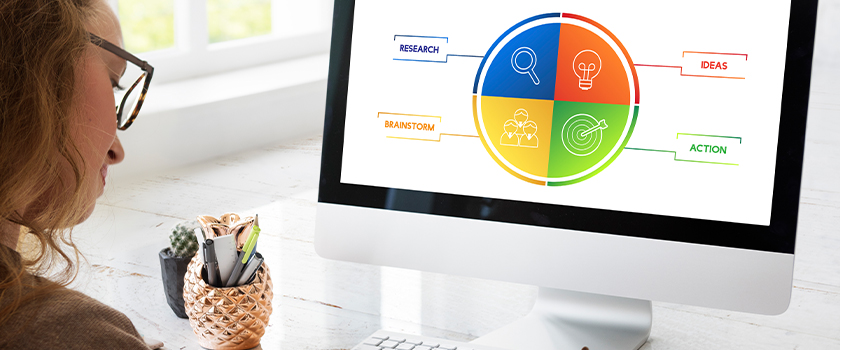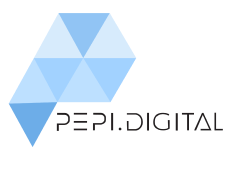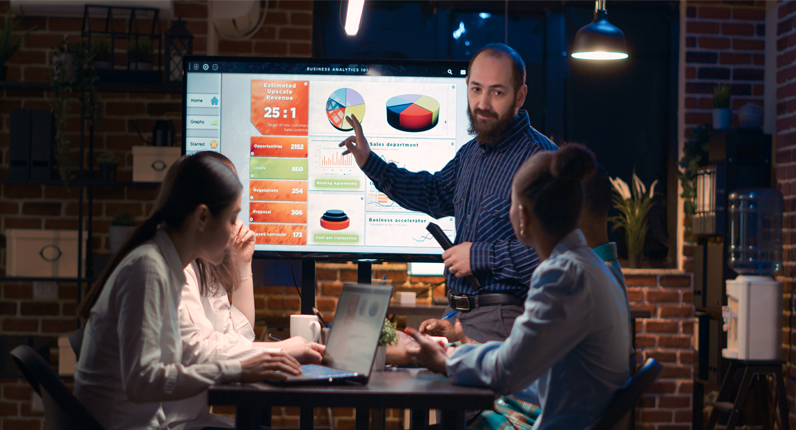In the ever-evolving digital landscape, direct-to-consumer (D2C) brands need forward-thinking strategies to stay relevant and engage customers effectively. India’s BoAt, a consumer electronics brand, has risen to prominence by crafting a standout digital marketing strategy that has resonated with modern consumers. BoAt’s success highlights key strategies that other D2C brands can adopt to maximize their impact in 2024. In this article, we’ll explore BoAt’s approach and outline effective digital marketing strategies for D2C brands in the coming year.

The Rise of BoAt: A Case Study
Founded in 2016, BoAt has quickly become one of India’s leading audio and wearable brands, focusing on affordable, stylish products that resonate with younger consumers. BoAt’s digital-first approach has been instrumental in its rapid growth, leveraging social media, influencer marketing, and brand loyalty programs to connect with its audience directly. In 2022, BoAt captured nearly 48% of the Indian wireless hearables market, demonstrating the power of a well-planned digital marketing strategy in the D2C space.
Here are key insights from BoAt’s marketing success that can inspire D2C brands in 2024:
1. Prioritising Community Building Over Product Promotion
One of the core strategies behind BoAt’s success is its focus on building a brand community rather than just promoting products. BoAt’s branding appeals to millennials and Gen Z consumers who value style, music, and lifestyle over just technical specifications. By creating content around lifestyle aspirations, BoAt has fostered a sense of community among its users, known as “BoAtheads.” This community-centric approach has helped BoAt turn customers into brand advocates, enhancing loyalty and encouraging organic growth.
Strategy Takeaway for 2024:
D2C brands should look beyond product-centric marketing and focus on building a community that resonates with their target audience’s values and aspirations. Using platforms like Instagram and TikTok, brands can foster engagement through user-generated content, live sessions, and interactive stories that create a deeper connection with customers.
2. Leveraging Influencer Marketing for Authentic Connections
BoAt has heavily invested in influencer marketing, partnering with popular celebrities, musicians, and fitness influencers who align with the brand’s identity. By associating with high-profile personalities and micro-influencers who represent their target demographic, BoAt amplifies its brand appeal and gains credibility among its young audience. This multi-tiered influencer strategy has expanded BoAt’s reach, allowing it to tap into niche communities within larger social platforms.
Strategy Takeaway for 2024:
In 2024, D2C brands can leverage influencer marketing by collaborating with influencers who genuinely align with their brand’s mission and values. Authenticity is key, so working with influencers who genuinely use and appreciate the brand’s products can create a more trustworthy image. Partnering with micro-influencers in particular allows brands to access smaller, highly engaged communities where recommendations are more impactful.
3. Embracing Content Diversity for Maximum Reach
BoAt’s content strategy is broad, encompassing short-form videos, blogs, social media posts, and engaging product visuals. The brand has adapted to the growing demand for varied content formats, with a strong presence on social platforms that appeal to its target audience. From educational posts and how-to videos to lifestyle snippets and user-generated content, BoAt’s diverse content strategy keeps its audience engaged and maintains high brand visibility.
Strategy Takeaway for 2024:
A content strategy that includes multiple formats allows D2C brands to reach audiences across different platforms and preferences. In 2024, brands should focus on creating a balanced mix of content, such as video tutorials, behind-the-scenes looks, user stories, and interactive posts. Platforms like Instagram Reels, YouTube Shorts, and TikTok are especially effective for reaching younger audiences and fostering engagement.
4. Optimising for Mobile Commerce (M-Commerce)
As mobile shopping continues to grow, BoAt has ensured its digital presence is optimised for mobile devices. Its website is mobile-friendly, and it utilises mobile advertising strategies to target users on social media and search engines effectively. BoAt’s seamless mobile experience enables quick navigation and smooth transactions, contributing to higher conversion rates from mobile users.
Strategy Takeaway for 2024:
With the rise of mobile commerce, D2C brands need to prioritise mobile-first design and functionality. This includes mobile-responsive websites, fast-loading pages, and easy-to-navigate layouts. Additionally, leveraging social media shopping features and mobile payment solutions can enhance the user experience and boost conversion rates in 2024.
5. Data-Driven Personalization and Retargeting
BoAt uses data insights to personalise its customer experience, ensuring that each customer interaction feels relevant and tailored. Through email marketing, retargeting ads, and personalised recommendations, BoAt drives conversions by showing products that align with each customer’s preferences. This personalised approach has strengthened customer loyalty and maximised lifetime value.
Strategy Takeaway for 2024:
In 2024, D2C brands should leverage data-driven personalization to create meaningful connections with their customers. Implementing machine learning algorithms to track user behaviour can help brands deliver targeted recommendations, retarget users effectively, and increase purchase likelihood. Email marketing automation and AI-based product recommendations are practical applications of personalization that will enhance engagement.
6. Cultivating Brand Loyalty with Rewards Programs
BoAt has established a loyalty program that rewards customers for repeat purchases and engagement. The “BoAtheads Club” gives members access to exclusive offers, early product launches, and other incentives. This loyalty program encourages repeat purchases, increases customer retention, and builds a dedicated customer base that consistently engages with the brand.
Strategy Takeaway for 2024:
For D2C brands, creating a loyalty program can be an effective way to retain customers in 2024. By offering exclusive benefits, discounts, or early access to new products, brands can build stronger relationships with their audience. Reward programs that integrate gamification elements, such as points for purchases and referrals, can further enhance customer engagement and encourage long-term loyalty.
7. Using User-Generated Content (UGC) to Build Trust
BoAt actively encourages its community of “BoAtheads” to share their experiences with BoAt products on social media. By reposting UGC on its official accounts, BoAt creates a sense of trust and social proof. This approach not only builds credibility but also allows the brand to showcase real customer satisfaction, which appeals to potential buyers.
Strategy Takeaway for 2024:
In 2024, D2C brands can benefit from encouraging and showcasing user-generated content to build trust with new customers. UGC acts as social proof, showing potential buyers how others are enjoying the products. Encouraging customers to tag the brand on social media or incentivizing reviews with discounts can amplify the UGC impact. Reposting UGC also shows appreciation, creating a stronger brand-community bond.
8. Real-Time Engagement and Customer Support
BoAt’s approach to customer support is proactive, with a strong emphasis on real-time responses to customer inquiries on social media and through chatbots. By offering prompt responses to questions, comments, and complaints, BoAt ensures customers feel valued and heard. This level of engagement has helped BoAt strengthen its relationship with its audience and build a positive brand image.
Strategy Takeaway for 2024:
Real-time engagement will be crucial for D2C brands looking to stand out in 2024. Customers expect quick responses, and brands that can meet these expectations foster a stronger relationship. D2C brands should invest in AI-driven chatbots and responsive social media teams to provide seamless customer support and create a positive brand image.
9. Performance Marketing and ROI-Driven Campaigns
BoAt has successfully used performance marketing to maximise its reach while controlling costs. By focusing on high-ROI channels like social media advertising and Google Ads, BoAt has effectively driven traffic to its online store. Through tracking metrics like cost-per-click (CPC) and return on ad spend (ROAS), BoAt fine-tunes its campaigns to ensure optimal performance.
Strategy Takeaway for 2024:
In 2024, D2C brands can achieve cost-effective growth by focusing on performance marketing and data-driven decision-making. Prioritising ROI-driven campaigns allows brands to allocate budgets more effectively and maximise returns. Regularly analysing campaign performance and adjusting strategies based on data insights is key to maintaining growth and profitability.
Conclusion
The success of BoAt highlights the importance of a holistic digital marketing approach that leverages community building, influencer partnerships, content diversity, mobile optimization, and customer loyalty programs. For D2C brands aiming to thrive in 2024, adopting a similar strategy can create lasting customer relationships and maximise brand visibility. As digital marketing trends continue to evolve, D2C brands that remain agile and customer-centric will be well-positioned for sustained growth.
In a crowded market, standing out requires more than just great products. By implementing these strategies, D2C brands can connect with their target audience, build loyalty, and drive growth in 2024 and beyond.



